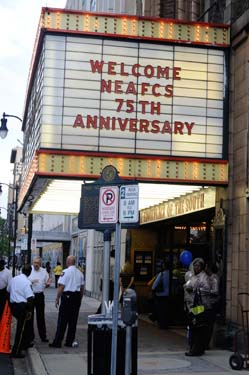
Welcome sign on the marquis at the historic Alabama Theatre, "The Showplace of the South" - September 17, 2009
|
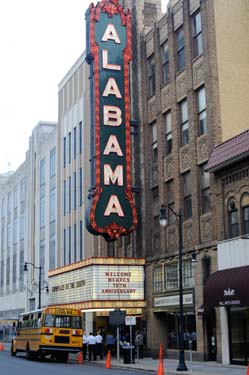
The Alabama Theatre was built in downtown Birmingham by Paramount Film Studio of New York. The theatre opened on December 26, 1927.
|
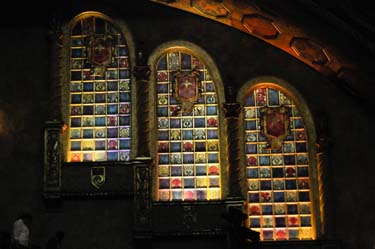
Even though the Theatre has been completely restored, the original windows escaped damage and deterioration and remain in the building.
|
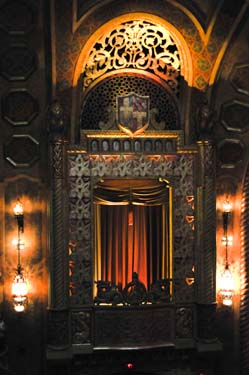
View of the stage as Cecil Whitmire's performance began after the pipe organ rose from the pit beneath the stage
|
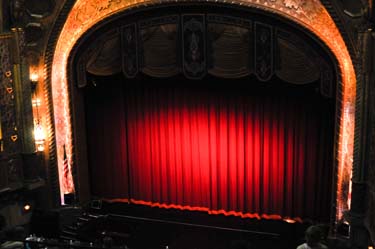
View of the Theatre stage from the balcony
|
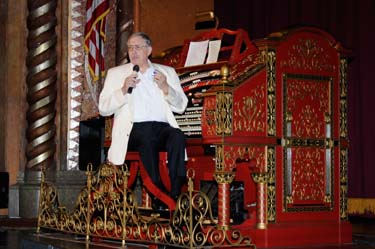
Cecil Whitmire, wearing his flashing NEAFCS pin, tells members about the Theatre and Big Bertha, the Mighty WurliTzer pipe organ. In the early days of movie theaters, organs or pianos were used to provide music to prevent the theater from being so quiet during the silent movies.
Big Bertha is original to the Alabama Theatre, but was completely restored in 1998. Big Bertha is on a lift and rises from the pit prior to each performance. Each Mighty WurliTzer theater was custom made; an organ was designed and made for each theater. Big Bertha is one of only three Mighty WurliTzers currently remaining in its original site. The organ's name is believed to have come from a long-forgotten song entitled "Birmingham Bertha."
Cecil Whitmire, house organist since the 1970's, is also president of the Board of Directors for Birmingham Landmarks, Inc., current owners of the Alabama Theatre.
|
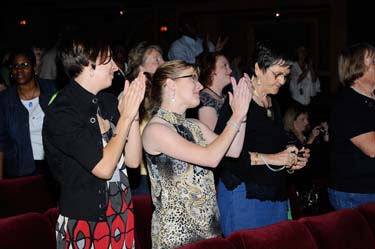
Audience gives standing ovation for Cecil Whitmire, house organist, and the person largely responsible for saving the Alabama Theatre from destruction.
|
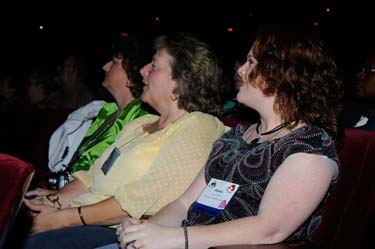
Audience enjoys performance of Sacred Harp Singers
|
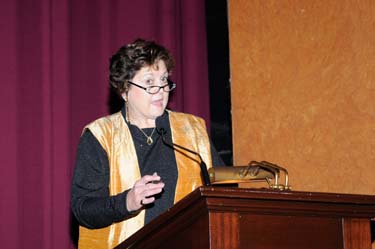
President-elect Mary Ann Lienhart-Cross introduces Jan Scholl for 75th Anniversary presentation
|
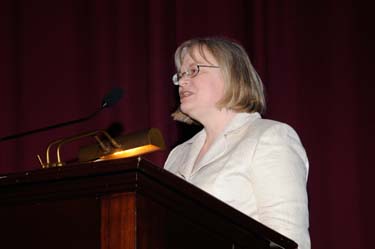
Jan Scholl presenting movies depicting early days of family programs in Cooperative Extension
|
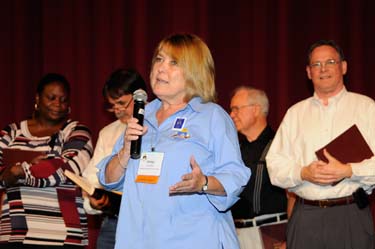
Shirley Whitten, co-chair of 75th Anniversary Friendship Event, introduces the Sacred Harp Singers.
Sacred Harp, often called shaped-note singing, is a traditional form of choral music which took root in the South. It involves singing songs by the four notes, fa, sol, la, mi first, then singing the words. No instruments are used as accompaniment. The traditional music is called Sacred Harp because the group sings from The Sacred Harp, an oblong songbook first published in 1844.
Sacred Harp music is not associated with any particular denomination, although it is a religious experience for most of the singers.
|
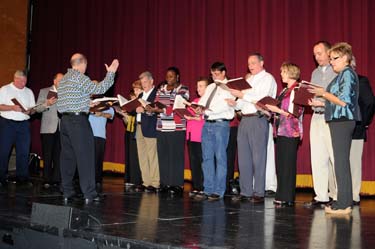
Sacred Harp Singers, led by David Ivey of Huntsville, traveled from various parts of North Alabama to perform for the celebration. The Sacred Harp Musical Heritage Association is a non-profit association whose purpose is the preservation and perpetuation of Sacred Harp singing and its traditions.
|
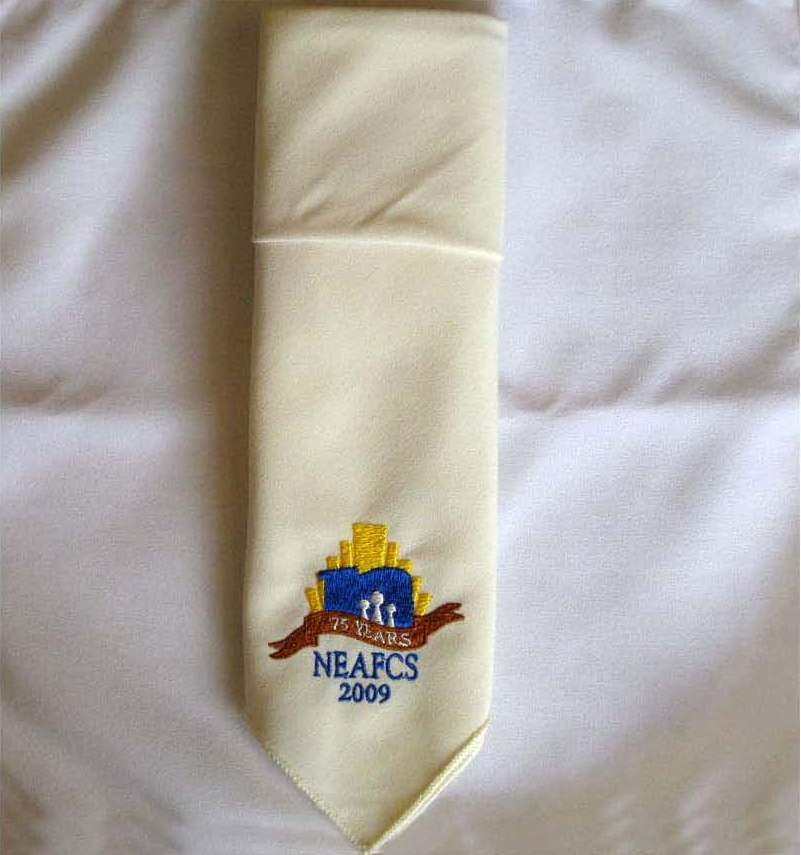
Napkins embroidered with the 75th Anniversary logo were provided by the NEAFCS 75th Anniversary Committee and were presented to participants at the Alabama Theatre.
|
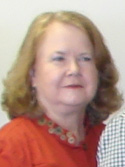 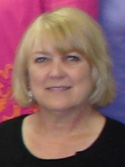
Co-chairs for the 75th Anniversary Friendship Event were Alabama Affiliate members Mary Lucile Jordan, left, and Shirley Whitten.
|
|